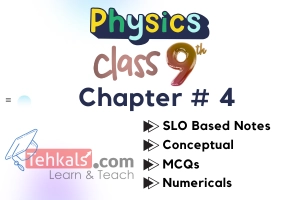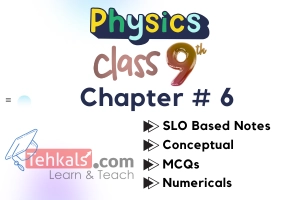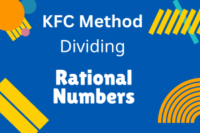Class 9 Physics Chapter 5
Published: 21 Oct 2023
Class 9 Physics Chapter 5 is about “Gravitation”. This article includes topics such as Gravitation, Law of Universal Gravitation, Newton’s Third Law of Motion and Universal Gravitation, Mass of Earth, Gravitational Field (Gravity is a field force, Gravitational field strength (free-fall acceleration) ‘g’, Weight changes with location), Variation of ‘g’ with Altitude, Motion of Artificial Satellites (Speed in Circular Orbit Calculation)
Class 9 Physics Chapter 5 Notes
Gravitation Notes
Class 9 Physics Chapter 5 SLO Notes
Class 9 Physics Chapter 5 MCQs
Law of Universal Gravitation
1 Which scientist formulated the Law of Universal Gravitation?(a) Albert Einstein
(b) Galileo Galilei
(c) Isaac Newton
(d) Johannes Kepler
Show Answer
Isaac Newton
2 According to the Law of Universal Gravitation, the force between two masses is directly proportional to:
(a) The product of their masses
(b) The square of the distance between them
(c) The cube of the distance between them
(d) The sum of their masses
Show Answer
The product of their masses
3 According to the Law of Universal Gravitation, the force between two masses is inversely proportional to:
(a) The product of their masses
(b) The square of the distance between them
(c) The cube of the distance between them
(d) The sum of their masses
Show Answer
The square of the distance between them
4 If the distance between two masses is doubled, the gravitational force between them will become:
(a) One-fourth
(b) One-third
(c) Half
(d) One-eighth
Show Answer
One-fourth
5 If the mass of the one object is doubled, the gravitational force between them will become:
(a) One-third
(b) Double
(c) Half
(d) One-eighth
Show Answer
Double
6 If the mass of the both objects are doubled, the gravitational force between them will become:
(a) One-fourth
(b) One-third
(c) Four-times
(d) One-eighth
Show Answer
Four-times
7 If the distance between two masses is half, the gravitational force between them will become:
(a) Four-times
(b) One-third
(c) Half
(d) One-eighth
Show Answer
Four-times
8 What law states that every point mass in the universe attracts every other point mass with a force that is directly proportional to the product of their masses and inversely proportional to the square of the distance between them?
(a) Newton’s First Law of Motion
(b) Newton’s Second Law of Motion
(c) Newton’s Third Law of Motion
(d) Law of Universal Gravitation
Show Answer
Law of Universal Gravitation
9 If the distance between two masses is tripled, the gravitational force between them becomes:
(a) One-sixth
(b) One-ninth
(c) One-third
(d) One-twelfth
Show Answer
One-ninth
10 Which of the following quantities has the SI unit “Newton”?
(a) Mass
(b) Weight
(c) Gravitational field strength
(d) Orbital velocity
Show Answer
Weight
11 The gravitational force between two masses will decrease if:
(a) Their masses decrease and the distance between them decreases
(b) Their masses increase and the distance between them decreases
(c) Their masses decrease and the distance between them increases
(d) Their masses increase and the distance between them increases
Show Answer
Their masses decrease and the distance between them increases
12 What is the gravitational force between two objects with masses of $ 5 kg \ and \ 10 kg $, respectively, if they are $ 2 \ meters $ apart?
(a) $ 0.25 N $
(b) $ 83.37 \times 10^{-11} N $
(c) $ 1.00 N $
(d) $ 2.00 N $
Show Answer
$ 83.37 \times 10^{-11} N $
13 What happens to the gravitational force between two masses if the distance between them is doubled and both masses are also doubled?
(a) It becomes one-fourth
(b) It becomes half
(c) It remains the same
(d) It becomes twice as strong
Show Answer
It remains the same
14 Gravitational constant is represented by,
(a) G
(b) g
(c) K
(d) GC
Show Answer
G
15 The value of gravitational constant $ G $ is,
(a) $ 6.3 \times 10^{-12} Nm^2/kg^2 $
(b) $ 9.8 m/s^2 $
(c) $ 5 \times 10^{-15} Nm^2/kg^2 $
(d) $ 6.67 \times 10^{-11} Nm^2/kg^2 $
Show Answer
$ 6.67 \times 10^{-11} Nm^2/kg^2 $
16 The unit of gravitational constant $ G $ is,
(a) $ Nm^2/kg^3 $
(b) $ Nm^2/kg^2 $
(c) $ Nm^{-2}/kg^2 $
(d) $ All \ of \ these $
Show Answer
$ Nm^2/kg^2 $
17 The value of gravitational constant G does not depend on,
(a) Vacuum
(b) Air
(c) Water
(d) All of these
Show Answer
All of these
18 What will be the value of G if mass of the earth becomes four times:
(a) No change
(b) Four times
(c) One fourth
(d) Doubled
Show Answer
No change
Newton’s Third Law of Motion and Universal Gravitation
19 Which law states that for every action, there is an equal and opposite reaction?(a) Newton’s First Law of Motion
(b) Newton’s Second Law of Motion
(c) Newton’s Third Law of Motion
(d) Law of Inertia
Show Answer
Newton’s Third Law of Motion
20 According to Newton’s third law of motion, if object A exerts a force on object B, then object B exerts a force on object A that is:
(a) Twice as large
(b) Half as large
(c) Equal in magnitude and opposite in direction
(d) Unrelated to the force exerted by A
Show Answer
Equal in magnitude and opposite in direction
To Download Complete Notes of Physics Notes 9 Class, Click on the given link.
Mass of Earth
21 The mass of Earth is approximately:(a) $ 6 \times 10^{24} kg $
(b) $ 6.4 \times 10^6 kg $
(c) $ 6 \times 10^{10} kg $
(d) $ 9.8 kg $
Show Answer
$ 6 \times 10^{24} kg $
22 The mass of earth is symbolically represented by,
(a) $ M_R $
(b) $ m_E $
(c) $ M $
(d) $ m $
Show Answer
$ m_E $
23 The mass of earth is primarily responsible for,
(a) The Earth’s rotation
(b) The Earth’s magnetic field
(c) The Earth’s gravity
(d) None of these
Show Answer
The Earth’s gravity
24 The mass of Earth is determined by using which scientific principle,
(a) Newton’s law of universal gravitation
(b) Law of conservation of mass
(c) Law of conservation of energy
(d) All of these
Show Answer
Newton’s law of universal gravitation
Gravitational Field
Gravity is a field force
Gravitational field strength (free-fall acceleration) ‘g’
Weight changes with location
Variation of ‘g’ with Altitude
25 What term describes the region around an object in which another object experiences a gravitational force?(a) Gravitational Pull
(b) Gravitational Field
(c) Gravitational Radius
(d) Gravitational Force Zone
Show Answer
Gravitational Field
26 …………….. is defined as the gravitational force experienced by a unit mass placed in a gravitational field.
(a) Gravitational force
(b) Mass of earth
(c) Gravitational field strength
(d) None of these
Show Answer
Gravitational field strength
27 Gravitational field strength is measured in:
(a) Joule
(b) Meter per second squared
(c) Kilogram
(d) Newton
Show Answer
Meter per second squared
28 $ “N/kg” $ is the unit of,
(a) Gravitational force
(b) Mass of earth
(c) Gravitational field strength
(d) None of these
Show Answer
Gravitational field strength
29 The acceleration experienced by an object in free fall near the surface of the Earth is approximately:
(a) $ 1 m/s^2 $
(b) $ 5 m/s^2 $
(c) $ 15 m/s^2 $
(d) $ 9.8 m/s^2 $
Show Answer
$ 9.8 m/s^2 $
30 How does the weight of an object change as its location changes from the surface of the Earth to a higher altitude?
(a) Increases
(b) Decreases
(c) Remains constant
(d) Becomes zero
Show Answer
Decreases
31 What happens to the value of $ “g” $, as altitude increases?
(a) It decreases
(b) It increases
(c) It remains the same
(d) It becomes zero
Show Answer
It decreases
32 An object in free fall experiences:
(a) No acceleration
(b) Constant velocity
(c) Increasing velocity
(d) Constant acceleration
Show Answer
Constant acceleration
33 How does the weight of an object change when taken to a location where the gravitational field strength is greater?
(a) Increases
(b) Decreases
(c) Remains constant
(d) Becomes zero
Show Answer
Increases
34 Which of the following statements about gravitational force is true?
(a) It can only attract, not repel
(b) It can only repel, not attract
(c) It can both attract and repel
(d) It doesn’t exist
Show Answer
It can only attract, not repel
35 The acceleration due to gravity on the Moon’s surface is about one-sixth of that on Earth. If an object weighs $ 60 N $ on Earth, what would it weigh on the Moon?
(a) 6 N
(b) 10 N
(c) 60 N
(d) 360 N
Show Answer
10 N
36 Which of the following has the greatest effect on the strength of the gravitational force between two objects?
(a) Mass of one object
(b) Mass of the other object
(c) Distance between the objects
(d) Location of the objects
Show Answer
Distance between the objects
37 Which of the following statements about gravitational field strength is correct?
(a) It is a vector quantity
(b) It is a scalar quantity
(c) It is measured in joules
(d) It is equal to the weight of an object
Show Answer
It is a vector quantity
38 If an object weighs 100 N on the surface of the Earth, what will be its weight when placed at a location where the acceleration due to gravity is half of Earth’s?
(a) 25 N
(b) 50 N
(c) 100 N
(d) 200 N
Show Answer
50 N
39 What is the approximate acceleration due to gravity on the surface of Mars?
(a) $ 3.7 m/s^2 $
(b) $ 9.8 m/s^2 $
(c) $ 5.7 m/s^2 $
(d) $ 1.6 m/s^2 $
Show Answer
$ 3.7 m/s^2 $
40 What is the approximate acceleration due to gravity on the surface of Moon?
(a) $ 3.7 m/s^2 $
(b) $ 9.8 m/s^2 $
(c) $ 5.7 m/s^2 $
(d) $ 1.6 m/s^2 $
Show Answer
$ 1.6 m/s^2 $
41 The radius of Earth is approximately,
(a) $ 6 \times 10^{24} m $
(b) $ 6.4 \times 10^6 m $
(c) $ 6 \times 10^{10} m $
(d) $ 9.8 m $
Show Answer
$ 6.4 \times 10^6 m $
42 The radius of Earth is repented by,
(a) $ r_E $
(b) $ r $
(c) $ R $
(d) $ E $
Show Answer
$ r_E $
43 A rocket is fired vertically upward from the surface of a planet. As it rises, its weight will:
(a) Increase
(b) Decrease
(c) Remain constant
(d) Become zero
Show Answer
Decrease
44 What is the force of gravity acting on a $ 10 kg $ object on Earth’s surface?
(a) 10 N
(b) 50 N
(c) 98 N
(d) 150 N
Show Answer
98 N
45 The acceleration due to gravity at the surface of a planet is $ 4 m/s^2 $. What is the weight of a $ 50 kg $ object on this planet’s surface?
(a) 10 N
(b) 50 N
(c) 100 N
(d) 200 N
Show Answer
200 N
46 An object is dropped from a certain height above the Earth’s surface. As it falls, its speed:
(a) Increase
(b) Decrease
(c) Remain constant
(d) Become zero
Show Answer
Increase
47 What is not true about g?
(a) g is different at different places
(b) g is greater at poles
(c) g is less at poles
(d) g decrease as go higher
Show Answer
g is less at poles
48 If weight of an object on the surface of earth is W. Its weight on the surface of moon will be:
(a) $ 6W $
(b) $ \frac{W}{6} $
(c) $ \frac{W}{4} $
(d) $ \frac{W}{8} $
Show Answer
$ \frac{W}{6} $
49 If mass of both the bodies is $ 1kg $ and distance between their centers is 1 m then the gravitational force will be equal to:
(a) $ G $
(b) $ g $
(c) $ M $
(d) $ m $
Show Answer
$ G $
50 When an object is at a height equal to radius of earth above the surface of the earth. What is the value of $ g $?
(a) $ 4g $
(b) $ 2g $
(c) $ \frac{g}{2} $
(d) $ \frac{g}{4} $
Show Answer
$ \frac{g}{4} $
51 On mountains our weight will be ………………..as compared to weight on the surface of earth.
(a) Equal
(b) Greater
(c) Less
(d) Zero
Show Answer
Less
52 Weight of the body of mass $ 10 kg $ on the surface of moon,
(a) 16 N
(b) 20 N
(c) 26 N
(d) 40 N
Show Answer
16 N
53 What is the mass of an object on the surface of Moon if its mass on Earth’s surface is 10 kg.
(a) 5 kg
(b) 10 kg
(c) 15 kg
(d) 100 kg
Show Answer
10 kg
Motion of Artificial Satellites
Speed in Circular Orbit Calculation
54 The minimum velocity required for an artificial satellite to maintain a stable orbit around Earth?(a) Escape velocity
(b) Terminal velocity
(c) Orbital velocity
(d) Acceleration velocity
Show Answer
Orbital velocity
55 What are bodies that orbits around larger bodies called
(a) Satellites
(b) Moons
(c) Planets
(d) None of these
Show Answer
Satellites
56 The man-made satellites are called
(a) Natural satellites
(b) Artificial satellites
(c) Made satellites
(d) All of these
Show Answer
Artificial satellites
57 When was the first artificial satellite launched?
(a) 1957
(b) 1967
(c) 1977
(d) 1987
Show Answer
1957
58 Which of the following is NOT a factor affecting the orbital velocity of a satellite?
(a) Mass of the satellite
(b) Mass of the Earth
(c) Altitude of the satellite
(d) Radius of the Earth
Show Answer
Mass of the satellite
59 The motion of an artificial satellite in a circular orbit is an example of:
(a) Translatory motion
(b) Uniform motion
(c) Circular motion
(d) Oscillatory motion
Show Answer
Circular motion
60 What is the shape of the path followed by an artificial satellite around the Earth?
(a) Ellipse
(b) Parabola
(c) Hyperbola
(d) Circle
Show Answer
Ellipse
61 What happens to the orbital velocity of a satellite if its altitude above the Earth’s surface decreases?
(a) Increases
(b) Decreases
(c) Remains the same
(d) None of these
Show Answer
Increases
62 The minimum velocity required for an object to escape the gravitational pull of a celestial body is called:
(a) Orbital velocity
(b) Escape velocity
(c) Terminal velocity
(d) Gravitational velocity
Show Answer
Escape velocity
63 Which of the following quantities is NOT required to calculate the orbital velocity of a satellite?
(a) Mass of the satellite
(b) Radius of the Earth
(c) Mass of the Earth
(d) Altitude of the satellite
Show Answer
Mass of the satellite
64 A satellite in a low Earth orbit will experience more or less gravitational force compared to a satellite in a higher orbit?
(a) Less
(b) More
(c) The same
(d) All of these
Show Answer
More
65 A satellite is revolving around the earth in a circular orbit. If the radius of the orbit is increased from $ R \ to \ 2R $. What will be its velocity?
(a) $ \sqrt{2v} $
(b) $ 2 \ v $
(c) $ 5 \ v $
(d) None of these
Show Answer
$ \sqrt{2v} $
66 An artificial satellite keeps on revolving around the earth in different orbits with uniform speed due to the?
(a) Gravitational force
(b) Frictional force
(c) Electromagnetic force
(d) Normal force
Show Answer
Gravitational force
67 What happens if a satellite’s speed is too low?
(a) It escape earth gravity
(b) It fall back to earth
(c) It becomes a moon
(d) All of these
Show Answer
It fall back to earth
68 What happens if a satellite’s speed is too high?
(a) It escape earth gravity
(b) It fall back to earth
(c) It becomes a moon
(d) All of these
Show Answer
It escape earth gravity
69 What keeps a satellite in orbit?
(a) Its high altitude
(b) Its mass
(c) Its high speed
(d) Its size
Show Answer
Its high speed
70 In a circular orbit, what is the nature of a satellite’s orbital velocity?
(a) It changes constantly
(b) It decreases as it orbits
(c) It increases as it orbits
(d) It remains constant
Show Answer
It remains constant
Physics Class 9 MCQs (All Chapters)
- Mashallah very effective keep it up

- Be Respectful
- Stay Relevant
- Stay Positive
- True Feedback
- Encourage Discussion
- Avoid Spamming
- No Fake News
- Don't Copy-Paste
- No Personal Attacks



- Be Respectful
- Stay Relevant
- Stay Positive
- True Feedback
- Encourage Discussion
- Avoid Spamming
- No Fake News
- Don't Copy-Paste
- No Personal Attacks





